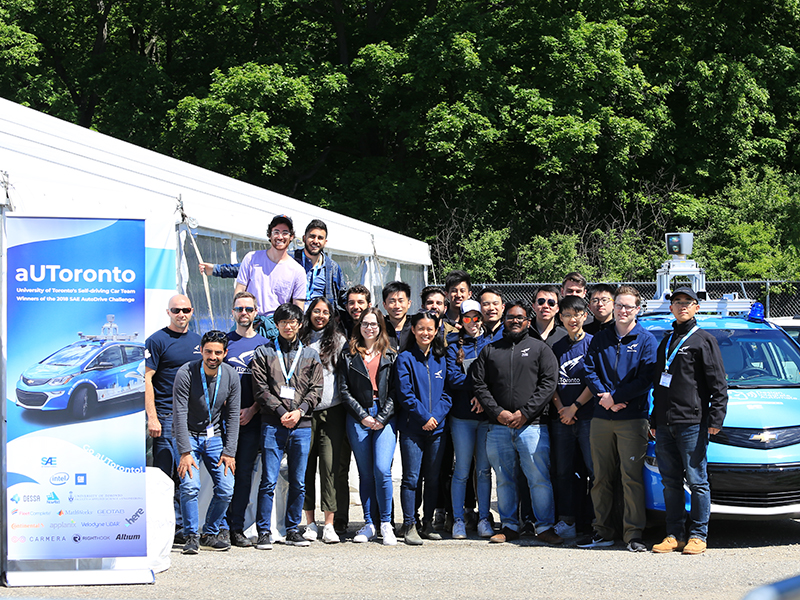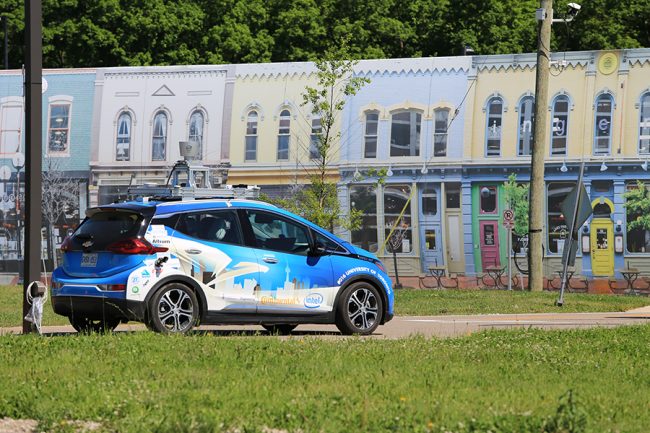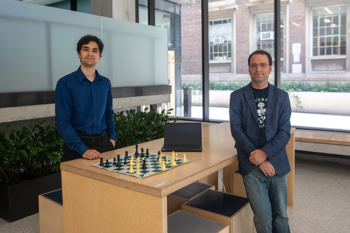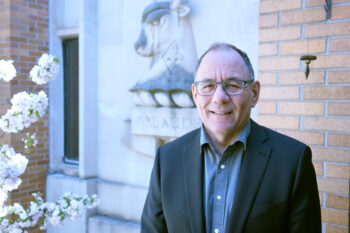The aUToronto team has done it again.
Competing against seven other universities at Year 2 of the AutoDrive Challenge, the team — composed of U of T Engineering and Computer Science students — came out on top for a second year in a row with their self-driving car, Zeus.
The three-year international competition challenges universities from across North America to turn an electric Chevy Bolt self-driving by 2020. Year 2 took place in Ann Arbor, Mich., from May 29 to June 4. Competitors included Kettering University, Michigan State University, Michigan Tech University, North Carolina A & T State University, Texas A & M University, University of Waterloo and Virginia Tech.
“I am extremely proud of our team,” said faculty advisor Tim Barfoot (UTIAS). “It was fantastic to see all their hard work pay off. The car performed pretty much exactly as planned. The team really came together and did a brilliant job of supporting each other.”

This year’s competition focused on urban environment driving scenarios. The teams had to complete four driving challenges that demonstrated the vehicles’ autonomous capabilities by obeying traffic signs, traffic lights at intersections, as well as navigating pedestrian crosswalks.
The final challenge took place at MCity, a simulated town built at the University of Michigan for self-driving vehicle testing.
“We performed perfectly on the traffic sign challenge, with a flawless parking job at the end,” says team lead Keenan Burnett (EngSci 1T6+PEY, UTIAS MASc candidate). “During the MCity challenge, we made it the farthest out of all the teams.”
Burnett says the key to their win was their many enhancements to Zeus over the past year. These included the use of LIDAR (light detection and ranging) localization to precisely determine the car’s positioning, and employing Deep Neural Networks (DNN) to correctly detect pedestrians and traffic lights — to do this, they collected a dataset of more than 70,000 images.
aUToronto earned its win by placing first or second in each of the judging categories, including:
- Concept Design: 2nd place
- Concept Design Presentation: 1st place
- Social Responsibility Report: 1st place
- Social Responsibility Presentation: 1st place
- Mapping Challenge: Tied for 1st place
- Traffic Control Sign Challenge: 1st place
- Pedestrian Challenge: 1st place
- Intersection Challenge: 1st place
- MCity Challenge: 1st place
“We are very proud of the work we’ve done so far and have our eyes on the future,” says Burnett. In preparation for the final competition next year, the team will begin improving Zeus’ object-detection capabilities, and focus on developing a fully reliable and safe operating system.
“I think we have a good shot at Year 3,” adds Burnett. “We hope to test Zeus on public roads sometime in the next year.”



